- Home
- Scott Turow
Ultimate Punishment Page 9
Ultimate Punishment Read online
Page 9
Goodness in this world is rarely divided so definitively. In the law, especially, things are usually a muddle. Most often, there are well-intentioned people on both sides of a case. Over the years, the actual experiences I’d had began to transform themselves imaginatively, so the new cast of characters I saw in my head appeared without white hats or black. Once that happened, I began to feel the vibration of something I might like to write about.
The plot of Reversible Errors draws only superficially on Alex’s case. Rommy Gandolph is thirty-three days away from execution for a triple murder when Arthur Raven, a former prosecutor now a corporate lawyer, is unwillingly appointed by the federal appellate court to administer what Arthur regards as the legal equivalent of last rites. In time, though, Arthur discovers that a dying prisoner in the penitentiary where Gandolph is housed is prepared to admit that he, not Gandolph, committed the murders.
Besides Arthur, there are three other main characters. Muriel Wynn, the prosecutor who sent Gandolph to death row, is now about to run for the top prosecutor’s job. She is personally ambitious, but also highly capable and earnestly committed to the murder survivors. Along with Larry Starczek, a bright detective who originally investigated the case, Muriel regards the new deathbed confession as the usual jailhouse hokum. Gillian Sullivan, a disgraced former judge who sentenced Gandolph to death, has now only recently been released herself from the penitentiary where she had been sent for taking bribes; she finds Gandolph’s case oddly symbolic of the mistakes in her own life. As their creator, I felt a divine love for all of these characters, which included an appreciation of their foibles and their heroic aspects.
When I started Reversible Errors in 1999, I’d had one point of departure imaginatively: the intense passions these cases always roil up for all the participants in the legal proceedings. At the core was my recollection of the anger and the burden I experienced in representing someone facing an unjust sentence, and the contrasting sense of high purpose I’d felt when I was a prosecutor. Early on in the book, the novel recounts Arthur’s reflections about the world of criminal law and capital prosecutions, which the court’s appointment has forced him to reenter:
Since leaving the Prosecuting Attorney’s Office, Arthur had played defense lawyer infrequently, only when one of the firm’s corporate clients or its bosses was suspected of some financial manipulation. The law he lived most days as a civil litigator was a tidier, happier law, where both sides fudged and the issues raised were minuscule matters of economic policy. His years as a prosecutor seemed to be a time when he’d been assigned each day to clean out a flooded basement where coliform bacteria and sewer stink rotted almost everything. Someone had said that power corrupted. But the saying applied equally to evil. Evil corrupted. A single twisted act, some piece of gross psychopathology that went beyond the boundaries of what almost anybody else could envision—a father who tossed his infant out a tenth-floor window; a former student who forced lye down the throat of a teacher; or someone like Arthur’s new client who not only killed but then sodomized one of the corpses—the backflow from such acts polluted everyone who came near. Cops. Prosecutors. Defense lawyers. Judges. No one in the face of these horrors reacted with the dispassion the law supposed. There was a single lesson: things fall apart. Arthur had harbored no desire to return to that realm where chaos was always imminent.
When I wrote that paragraph, relatively early in the scattered process in which I work toward a first draft, I knew I’d expressed the novel’s central vision. But I would have been hard pressed to articulate more. Writing, for me, when it’s best, is conducted at remove from my cerebral life. The moment when I first truly believed I was destined to become an author occurred in my junior year of college when I climbed out of a fever bed and in twelve hours wrote a solid draft of a short story I later published. Writing in the grip of emotion, attempting to assign words to onrushing feeling, remains the central experience for me. In the initial stages, I seldom reflect at great length on the meanings of the action I envision. I strive to create a coherent imagined world. If that emerges, there will be a wholeness in the novel in which significance is implicit. Generally speaking, I think fiction seeks to reflect the ambiguity and contradictions in experience, not some slogan or message. If there were a shorter way to fully express what the story does, there would be no point in telling it.
Certainly, I did not want to write a dogmatic book about the death penalty, because, as I have confessed at length here, my feelings about capital punishment were anything but firm. I wanted only to portray the maelstrom of emotions that swirls within each of the warring contenders on the legal battlefield.
As a result, there was a strange companionship between my lawyerly work on the Commission—reading learned papers and court cases, writing reports and framing rules—and the emotionally engrossing but less analytical work on the novel. For the most part, I was convinced that the two enterprises did not intersect. And as a result, I was not conscious of exactly what the imaginative living-through with my characters of Rommy Gandolph’s case was contributing to my reflections about capital punishment.
In retrospect, though, I think I was settling on some insights that would contribute to my ultimate conclusions. Reason, in my novel, battles not only the strong emotions provoked by a horrendous crime but also the giddiest impulse—love. In fact, many readers and reviewers commented that Reversible Errors is more a love story than a tale of courtroom proceedings. Arthur, Rommy’s lawyer, and Gillian, once Rommy’s judge, end up an item, as Larry, the detective, and Muriel, the prosecutor, were a decade before. The complications between men and women are hardly a new theme for me—or for the novel. But, as is my custom, I did not reflect at length on why the book makes such a dogged contrast between the legal case that consumes these characters and their desperate pursuit of emotional connection in their personal lives. Now that the novel is behind me, the point seems relatively clear.
In confronting murder, we as a society ask how we should face an ultimate evil, which, if unchecked, would reduce almost all human interaction to war. We want to punish in order to prevent murder, but also as part of our effort to restore ourselves from the anxieties it raises about our ability to live with one another. I have always suspected that what we want most from punishment, beginning with the moments when we first hit someone back as young children, is restoration. The pain will leave us and go instead into the person we hurt. Given that, I have occasionally wondered as I’ve listened to the surviving family of murder victims if, in some shadowed place in their heart, is the hope that the death of the killer will somehow restore their lost loved one to life.
Even to state all of these goals is to recognize their impossibility. The legal process will never fully heal us. The failure of the law to deliver all that we ask from it is probably the essential theme of all of my novels, and even of the one earlier nonfiction book I wrote about being a law student. I revere the enterprise of the law, but it does not function flawlessly. It neither finds the truth nor dispenses justice with the reliability it is obliged to claim. The law’s sharp-edged rules never cut through the murk of moral ambiguity, nor do they fully comprehend or address the complexities of human motivation and intention. And just punishment alone does not render the world one we want to live in.
Murder takes us to the Land’s End of the law. Our horror and revulsion undermine our capacity to reason—and prove that justice alone will not make us whole. Only the attachments we have to each other, the antipodal experience of what goes on in the moment a murderer kills, can accomplish that. In the face of the cruelties we visit upon one another, murder being the gravest wrong among them, a sense of meaning and connection must come from outside the law.
15
CONCLUSIONS
WHEN I’D GONE DOWN TO TAMMS with Matt Bettenhausen and Nancy Miller and met Henry Brisbon, I’d had a subordinate reason for making the trip: Illinois’ execution chamber is now located there. Unused for more than two years bec
ause of Governor Ryan’s moratorium, it remains an irretrievably solemn spot, with the sterile feel of an operating theater in a hospital, replete with stainless steel tables and the blank window of an observation gallery. The execution gurney where the lethal injection is administered is covered in a starched sheet and might even be mistaken for an examining table, but for the arm paddles that extend from it, and the criss-crossing leather restraints that strike a particularly odd note in the world of Tamms, where virtually all other materials are steel, concrete, and plastic.
Several years ago, I attended a luncheon where Sister Helen Prejean, author of Dead Man Walking, delivered the keynote address. The daughter of a prominent New Orleans lawyer, Sister Helen is a powerful orator in her own right. Inveighing against the death penalty, she looked at the audience and repeated one of her favorite arguments: “If you really believe in the death penalty, ask yourself if you’re willing to inject the fatal poison.”
Standing in the death chamber at Tamms, I had Sister Helen in mind. It is an illusion to think that jailers themselves don’t find an execution deeply unsettling. George Welborn pointed out that one advantage of having the execution chamber at Tamms, away from the vast majority of death row inmates, is that it avoids asking correctional officers to help terminate the life of someone they have lived with every day, albeit in the relationship of guard and guarded. When we discussed the possible outcomes of the Commission’s work, George, who had presided over lethal injections before the moratorium, looked at all of us and said, “If I don’t have to do another execution ever again, that’s fine with me.”
We went from the death chamber to the cell of Ike Easley, a former gang leader who received a capital sentence for performing a revenge killing on a correctional officer. Easley is not a letter from home. The evidence at his sentencing hearing years ago showed that while imprisoned he had six reports for assault, thirty for insolence or threats, fifty-two for disobeying orders, sixty-four for unauthorized movement, three for gang activity, four for dangerous contraband, and two for drugs and paraphernalia. But standing behind the punch plate of his cell, Easley seemed slow-witted and eager to please. Even knowing his record, I was struck by the cruelty of executing someone like this, who has been rendered docile and subdued. The horror of a cool, contemplated end to the life of another human being, especially in the name of the law, is profound.
And yet, if it were Gacy, the murderer of thirty-some young men, on that gurney, if circumstance had put me in George Welborn’s position, I could, as Sister Helen would have it, push the button. After two years of solemn contemplation, I won’t pretend that I think the death penalty is the product of an alien morality, or that I can’t respect the considered judgment of the greater portion of my fellow citizens that it ought to be imposed on the most horrific crimes.
Recognizing that capital punishment still commands a political majority in Illinois, the Commission proceeded on the assumption that the death penalty would continue, and confined our formal recommendations to prospective reforms. Yet, as Senator Simon promised he would do from the start, he nonetheless called on us as thoughtful persons who had now studied this issue at length to give the people of the state of Illinois our best advice, as an expression of sentiment rather than a formal proposal. Should capital punishment continue to be imposed in Illinois? On a day late in the fall of 2001, as we were preparing for a dinner with the Governor at the Executive Mansion in Springfield, Paul called the question and asked for a vote. A majority said no to capital punishment. A number of the Commission members who had been unwilling to declare themselves opponents of death penalty when we started, had, after two years of digesting cases and research, crossed that fateful Rubicon to say they were against killing killers. Some had moral objections. Some thought the death penalty was a waste of scarce resources. Some thought that the proposals we’d made, which were essential to true reform, would never be fully adopted by the Illinois General Assembly and that abolition was the only sensible alternative, as a result.
Although the ebb and flow of American opinion about capital punishment will continue for decades, I suspect that the death penalty will eventually be abolished in this country. The world community seems intent on shaming us for adhering to a practice it regards as savage, and as globalization proceeds, those opinions are likely to count for more here. Indeed, there are even increasing numbers of conservatives with growing doubts, calling capital punishment one more government program that has failed, or blaming death penalty opponents for making the process so time-consuming and expensive that it is not worth the struggle.
But it is not political consensus that is likely to take us to abolition. I expect Americans—and their politicians—to remain in conflict, provoked by individual cases and reluctant to focus on the actual output of the system as a whole. Their hesitation to fix what is fixable in our capital schemes will force the ultimate judgments into the courts. The incremental approach the U.S. Supreme Court has favored for the last twenty-five years, creating strict procedural hurdles to death sentences and declaring the death penalty unconstitutional in more and more settings—when applied to the mentally retarded; when decided, after a verdict, by a judge—will eventually stretch the fabric of the law to the point that it is too much of a patchwork to be regarded as a work of reason. Because of this, there may be intervals when the Court attempts to tamper no further with capital punishment. But the gross inequities that these extreme cases routinely seem to produce will not allow the Court to keep its distance forever. While the framers clearly accepted death as a permissible punishment, they also accepted slavery and the chattelizing of women. Times change. Eventually, I expect the Court to conclude that capital punishment and the promise of due process of law are incompatible.
I admit I am still attracted to a death penalty that would be available for the crimes of unimaginable dimensions like Gacy’s, or that would fully eliminate the marginal risks that incorrigible monsters like Brisbon might ever again satisfy their vampire appetites. But if my time on the Commission taught me one lesson, it was that I was approaching the question of capital punishment the wrong way. There will always be cases that cry out to me for ultimate punishment. That is not the true issue. The pivotal question instead is whether a system of justice can be constructed that reaches only the rare, right cases, without also occasionally condemning the innocent or the undeserving.
Thus, for me, at the end of the day, the question is which mistake I prefer to see made by this system that has long symbolized our moral instincts as a nation. Allowing Gacy or Brisbon to live is infuriating, even shaming when the law must tell the survivors that their taxes will help finance the continued existence of such men. But the furious heat of grief and rage the worst cases inspire will inevitably short-circuit our judgment and always be a snare for the innocent. And the fundamental equality of each survivor’s loss, and the manner in which the wayward imaginations of criminals continue to surprise us, will inevitably cause the categories for death eligibility to expand, a slippery slope of what-about-hims. After twenty-five years of attempting to establish laser-like guidelines, we still end up with a moral hodgepodge where Chris Thomas is condemned to die because he is poor and belligerent, while the likes of the Menendez brothers, who shotgunned their parents for their millions, or the Unabomber, who killed and maimed and threatened the nation for years, get life. In yet another of the perpetual paradoxes in this subject, retaining the death penalty seems to be a road to breeding disrespect for the law, because it exposes so many of its shortcomings.
One reason our capital jurisprudence is such a mess is because even the justices of the U.S. Supreme Court, who have long experience in making and sticking with hard decisions, have waffled. Harry Blackmun is hardly alone. In the last twenty-five years, Justices Stewart, White, Powell, and Stevens have also taken varying positions when confronted with the question of whether or not capital punishment as currently practiced is constitutionally tolerable. I take myself as no better
than they. Long after that day in fall 2001, when Senator Simon called upon us all to offer a definitive judgment on the death penalty, a number of my fellow commissioners revised their positions. But I appear to have finally come to rest on the issue. Today, I would still do as I did when Paul Simon asked whether Illinois should retain capital punishment. I voted no.
Preamble to the Report of the Illinois
Governor’s Commission on Capital
Punishment, April 2002
Notes
Acknowledgments
Below is the Preamble to the Commission’s Report, summarizing our major recommendations. While I wrote an initial draft, most Commission members, and a number of the staff, made significant contributions to what appears here.
PREAMBLE
ON MARCH 9, 2000, shortly after declaring a Moratorium on executions in Illinois, Governor George Ryan appointed this Commission to determine what reforms, if any, would ensure that the Illinois capital punishment system is fair, just and accurate. Today, we are presenting the Governor with our recommendations. Most of these proposals were endorsed unanimously by our Commission. Although individual members of the Commission disagree with some specific proposals, the Commission members are uniform in their belief that the body of recommendations as a whole would, if implemented, answer the Governor’s call to enhance significantly the fairness, justice and accuracy of capital punishment in Illinois.

 Testimony
Testimony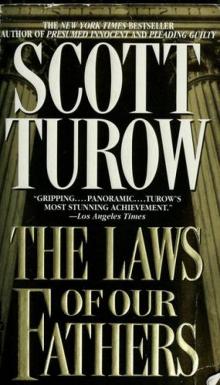 The Laws of Our Fathers
The Laws of Our Fathers Ordinary Heroes
Ordinary Heroes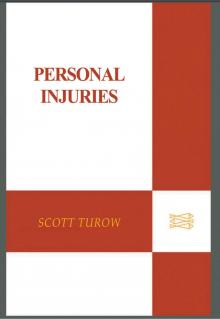 Personal Injuries
Personal Injuries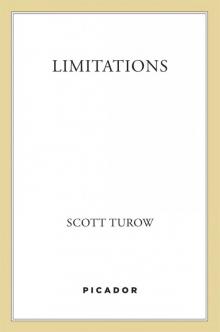 Limitations
Limitations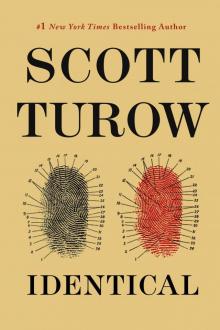 Identical
Identical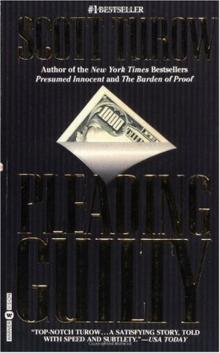 Pleading Guilty
Pleading Guilty Presumed Innocent
Presumed Innocent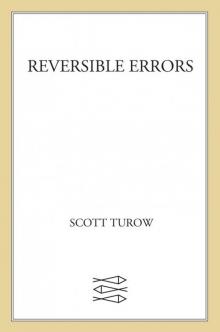 Reversible Errors
Reversible Errors One L: The Turbulent True Story of a First Year at Harvard Law School
One L: The Turbulent True Story of a First Year at Harvard Law School Ultimate Punishment
Ultimate Punishment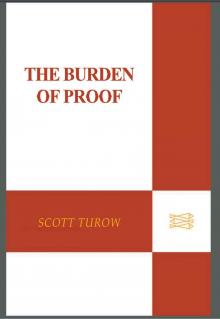 The Burden of Proof
The Burden of Proof Ordinary Heroes (2005)
Ordinary Heroes (2005)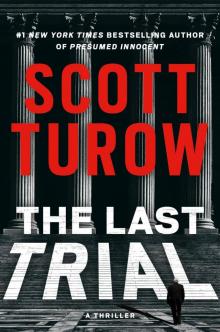 The Last Trial
The Last Trial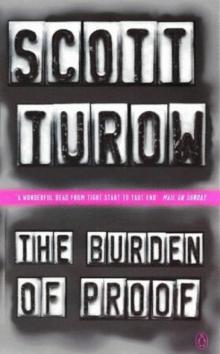 The Burden of Proof kc-2
The Burden of Proof kc-2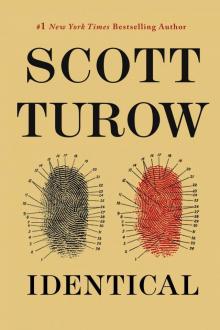 KC09 - Identical
KC09 - Identical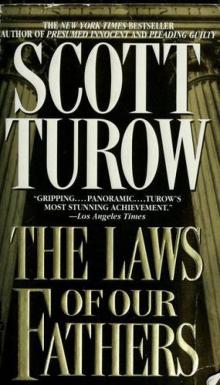 The Laws of our Fathers kc-4
The Laws of our Fathers kc-4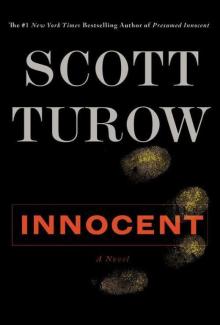 Innocent kc-8
Innocent kc-8 One L
One L Identical kc-9
Identical kc-9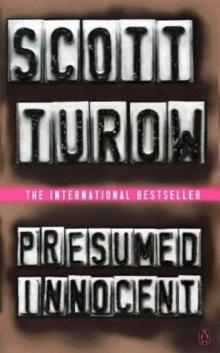 Presumed innocent kc-1
Presumed innocent kc-1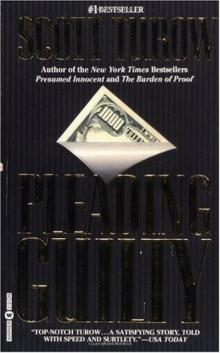 Pleading Guilty kc-3
Pleading Guilty kc-3 One L (1977)
One L (1977)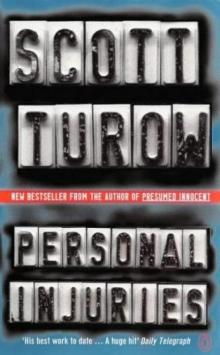 Personal injuries kc-5
Personal injuries kc-5